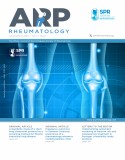A systemic lupus erythematosus patient with Mycobacterium haemophilum infection under treatment: a case report
Authors
Eva Rojas-Rojas; Wendy Rosario Cinencio-Chávez; Julia Dolores Estrada-Guzmán; Rafael Laniado-Laborín;
Keywords
Environmental mycobacteria, or nontuberculous mycobacteria (NTM), include over 170 species, with few frequently affecting humans. M. haemophilum, a slowly growing acid-fast bacillus, is known to cause various infections in immunocompromised patients. We present a case of a 29-year-old female with systemic lupus erythematosus, under immunosuppressive treatment, who developed disseminated skin lesions. Initially presenting with painful erythematous nodules that ulcerated, her condition was initially attributed to lupus. A skin biopsy revealed chronic granulomatous inflammation positive for acid-fast bacilli, leading to treatment for what was thought an infection by M. abscessus. Molecular sequencing later identified M. haemophilum, prompting a switch to a regimen of rifampicin, isoniazid, ethambutol, and levofloxacin, resulting in clinical improvement and lesion remission. M. haemophilum infections are more common in severely immunocompromised patients, often involve dermal lesions, and require accurate diagnosis through a combination of histological, molecular, and culture methods. Immunosuppressive therapy in autoimmune diseases predisposes patients to NTM infections. While tuberculosis infection can be screened and managed preemptively, no equivalent protocols exist for NTM, making close monitoring of immunosuppressed patients crucial for early detection and treatment.
Eva Rojas-Rojas
Tijuana General Hospital
Wendy Rosario Cinencio-Chávez
Tijuana General Hospital
Julia Dolores Estrada-Guzmán
Autonomous University of Baja California
Rafael Laniado-Laborín
Tijuana General Hospital
Tijuana General Hospital
Wendy Rosario Cinencio-Chávez
Tijuana General Hospital
Julia Dolores Estrada-Guzmán
Autonomous University of Baja California
Rafael Laniado-Laborín
Tijuana General Hospital





